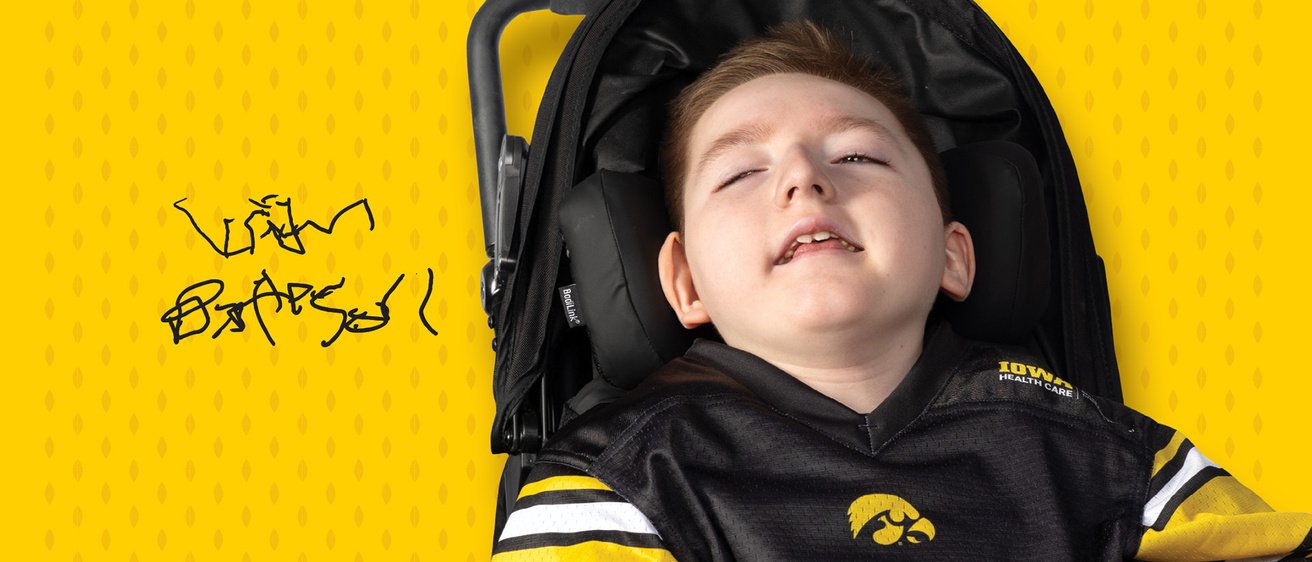In the world of medicine, Liam Bartleson’s legacy will be one of innovation and advancement. For his family, his legacy is one of love, perseverance, and hope.
Story and videography: UI Health Care Marketing and Communications
Photography: Liz Martin
Published: Sept. 15, 2025
Liam’s journey with University of Iowa Health Care Stead Family Children’s Hospital began in 2014 when he was just two days old.
“I had a normal pregnancy for nine months, and then Liam came, and everything changed basically from day one,” says Liam’s mother, Katy Montgomery, who had an emergency cesarean section at their local hospital.
By the next day, Liam showed signs of apneic episodes, in which he would temporarily quit breathing. Suspecting the baby boy needed a higher level of care, he was transferred by ambulance to Stead Family Children's Hospital in Iowa City.
Hundreds of seizures a day
Montgomery and then-husband Mitch Bartleson, Liam’s father, followed their son to the children’s hospital, confused and anxious for answers.
“At the time, they weren’t considering them seizures; they were just apneic episodes,” Montgomery says. “When he was trying to sleep, his brain just wouldn’t relax with his body, so that’s when the seizures would come.”
Liam spent five weeks in the hospital, finally being discharged without a definitive diagnosis. At home, his seizures continued.
“A bad day for Liam was probably anywhere up to 200 seizures a day,” Bartleson says.
In July of that year, a neurologist at Stead Family Children’s Hospital was able to diagnose Liam with an extremely rare condition, called malignant migrating partial seizures of infancy, considered to be a severe form of epilepsy.
The No. 1 children's hospital in Iowa
University of Iowa Health Care Stead Family Children’s Hospital is Iowa’s only nationally ranked children’s hospital, offering all pediatric subspecialties and caring for kids from all 99 counties in Iowa. We provide world-class pediatric care that families trust — and kids deserve.
“We were told his prognosis was basically one year,” Montgomery recalls.
His dad notes that at the time of Liam’s diagnosis in 2014, just 100 cases had been reported worldwide and that it was caused by a gene mutation.
“We were thankful we were finally able to get that as an answer,” Montgomery says.
Combining treatments
Unfortunately, medications and other treatments failed to improve Liam’s condition.
“I don’t know how many meds he went through, because it was trial and error,” Montgomery says. “They needed something to help control his seizures.” Due to the type of epilepsy, other forms of treatment were ruled out, including curative brain surgery.
“Liam’s entire brain is affected,” Montgomery says. “It literally migrates to all sections of his brain. If only one section was affected by the seizures, they could probably remove that part of the brain, but they could see that they were migrating and affecting all of his brain.”
Eventually, Liam’s care team enrolled him in a trial of cannabidiol (CBD) oil to help manage the seizures. Liam’s prescription contained no tetrahydrocannabinol (THC), the psychoactive ingredient in marijuana that produces a high.
“That was our very last option,” Montgomery says. “At that point, we were desperate for anything, so we tried to stay optimistic and hopeful.”
When used with clonazepam — a strong medication used to treat severe seizures as it calms the nervous system — the combination worked.
“It took a few weeks to see a noticeable change for Liam,” she adds, “but after that, his seizures basically dropped, not to zero, but definitely better than when it was 200 seizures a day.”
Currently, his seizures have been reduced to fewer than 10 per day.
“We’ve never once felt we needed a second opinion. We’ve always felt confident with their care.”
Advancing medical research
For two years, Liam became a case study for the effectiveness of CBD oil. The results were promising: he was able to maintain his growth, and over time, the findings helped demonstrate that the treatment was beneficial, leading to approvals for continued care.
Physicians told Liam’s parents that his case also could significantly impact future research, offering new insights for other children with similar conditions.
“In times when hope seemed distant, their unwavering support for Liam and our family showed just how committed they are to every child's well-being,” Bartleson says. “Their ability to provide not just top-notch medical care, but also emotional and moral support is something truly special.”
Liam has undergone several major surgeries, including an operation to put his hips back in their sockets and a lengthy spine surgery.
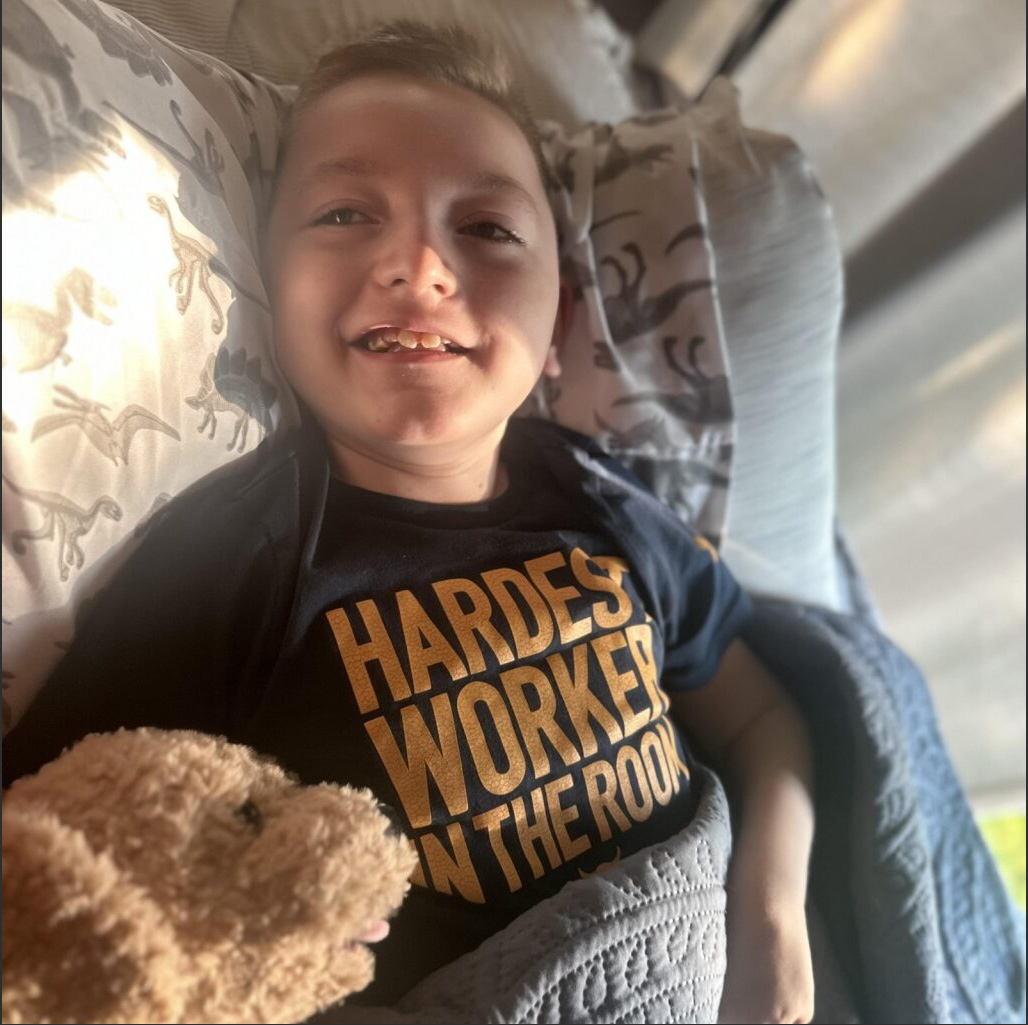
“Though Liam may not speak, his condition has helped advance medical knowledge, and his journey has proven to be a beacon of hope for others facing similar challenges,” says his father, Mitch Bartleson. “His story is a testament to the power of perseverance, the importance of innovative medical research, and the hope that can arise even in the face of overwhelming challenges.”
While he cannot speak, he is able to communicate through facial expressions, including scowls when he is frustrated – his dad says Liam doesn’t like getting his hands dirty – and smiles when he likes someone, which includes the nurses at Stead Family Children's Hospital.
“The nurses advocate so well for the families,” Bartleson says. “They help ask questions and break it down for families to understand. Every doctor has been supportive, too. They are in our corner when we say we want something for Liam.”
“We’ve never once felt we needed a second opinion,” Montgomery adds. “We’ve always felt confident with their care.”
The power of perseverance
Now 11, the Altoona boy enjoys watching movies, loves trees and the outdoors, and spending time with his family and his service dog, Meeko.
The goldendoodle was named after the raccoon character in the Disney movie Pocahontas, portrayed as her best friend.
“We just want to give him a good life,” Montgomery says, “a good quality of life.”
Liam continues to use CBD oil for his condition and returns to Stead Family Children’s Hospital on a regular basis for checkups.
“Though Liam may not speak, his condition has helped advance medical knowledge, and his journey has proven to be a beacon of hope for others facing similar challenges,” Bartleson says. “His story is a testament to the power of perseverance, the importance of innovative medical research, and the hope that can arise even in the face of overwhelming challenges.”
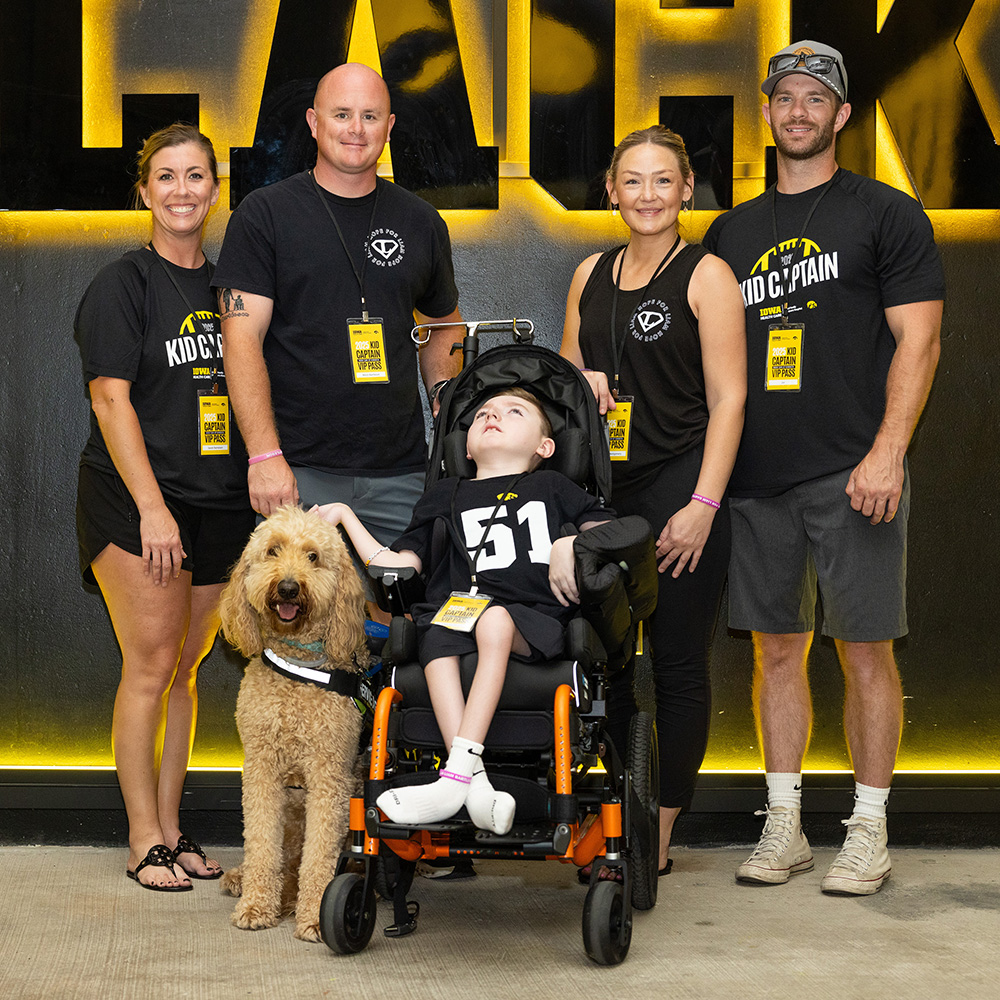
Liam Bartleson and family members have their photo taken near the "Back in Black" display at Kinnick Stadium during Kids Day at Kinnick. Liam's service dog Meeko is seen to Liam's right.
Great stories happen at Iowa
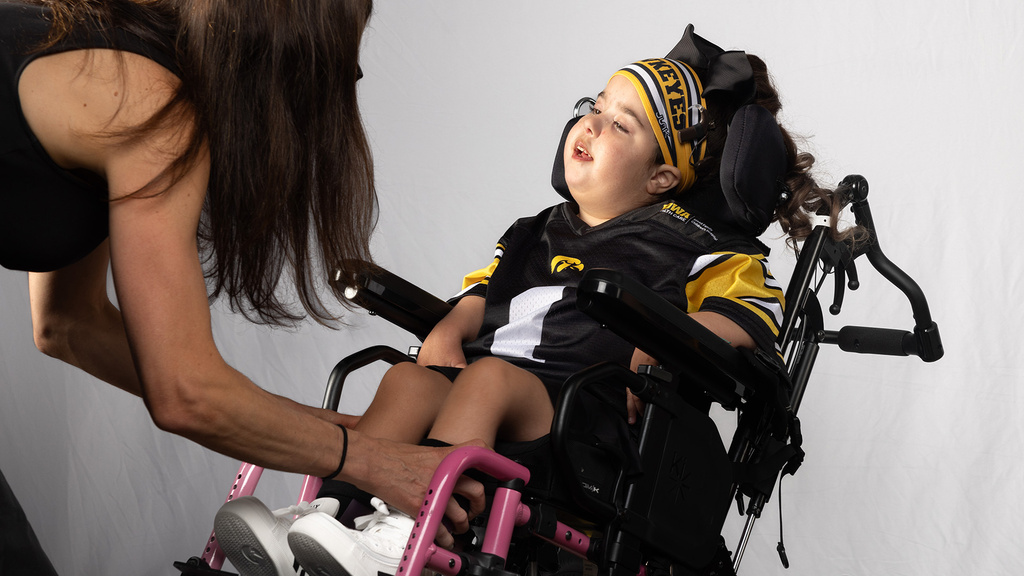
Meet Kid Captain Gwendolyn Clouse
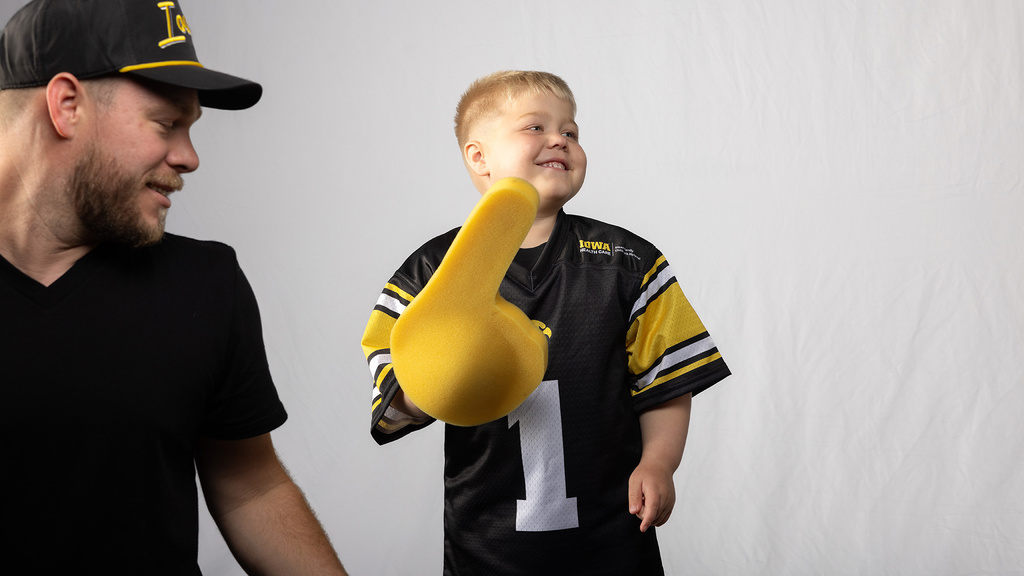
Meet Kid Captain James Hall

